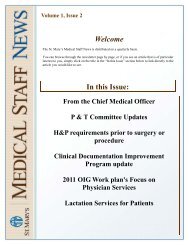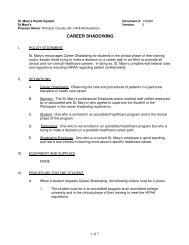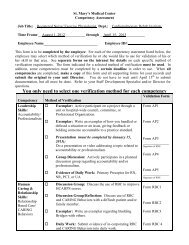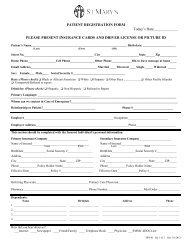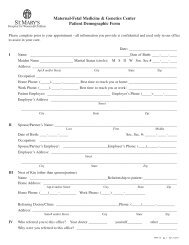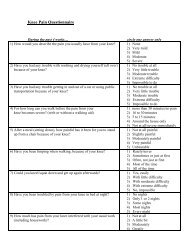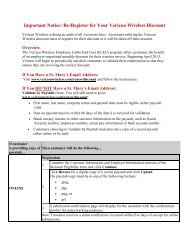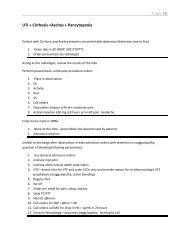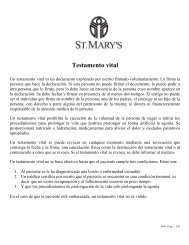TCS splinting
TCS splinting
TCS splinting
- No tags were found...
Create successful ePaper yourself
Turn your PDF publications into a flip-book with our unique Google optimized e-Paper software.
Neurovascular AssessmentThe 5 Ps1.Pain Pain on passive motion,unrelenting pain, or pain out ofproportion should be furtherinvestigated because it maysignify compartment syndrome. Sudden increase in pain maysignify thrombus formation.Neurovascular AssessmentThe 5 Ps (continued)2. Pallor Pink skin indicates arterialpressure is normal. Whitish color signifies decreasedarterial supply. Bluish color signifies venousstasis.Neurovascular AssessmentThe 5 Ps (continued)3. Pulse Palpate distal pulse of splintedextremity when possible. Notepresence and strength of pulse. Assess capillary refill by pressing onthe toenail or fingernail, release, andnote pinking of nail. Nail should pinkup in 3 seconds or less. Weak or absent pulse may indicatedecreased circulation to splinted area.Neurovascular AssessmentThe 5 Ps (continued)4. Paresthesia Assess for numbness, tingling, orabnormal sensations. Paresthesia may indicate nervedamage and/or development ofcompartment syndrome.Neurovascular AssessmentThe 5 Ps (continued)Where to Begin5. Paraplegia Assess for motion. Paraplegia may indicate nervedamage or/and development ofcompartment syndrome.Assess pt health status, includingconditions affecting wound healing(diabetes, peripheral vascular disease,malnutrition, age…)Assess pt understanding of upcomingsplint application.Assess condition of tissues to be insplint, circulation (pulse, color, skintemp) to extremities, range of motion,and sensation.2



